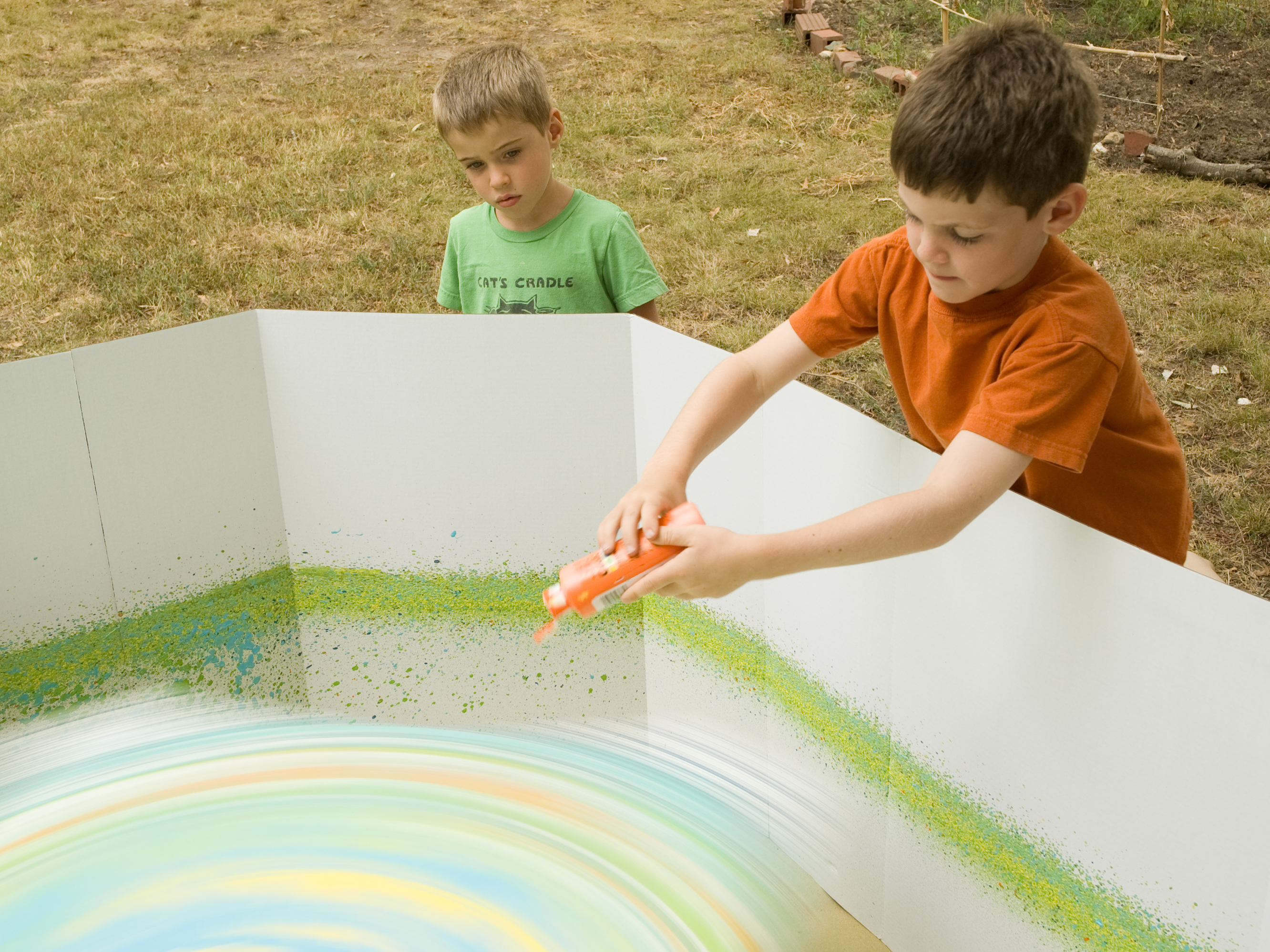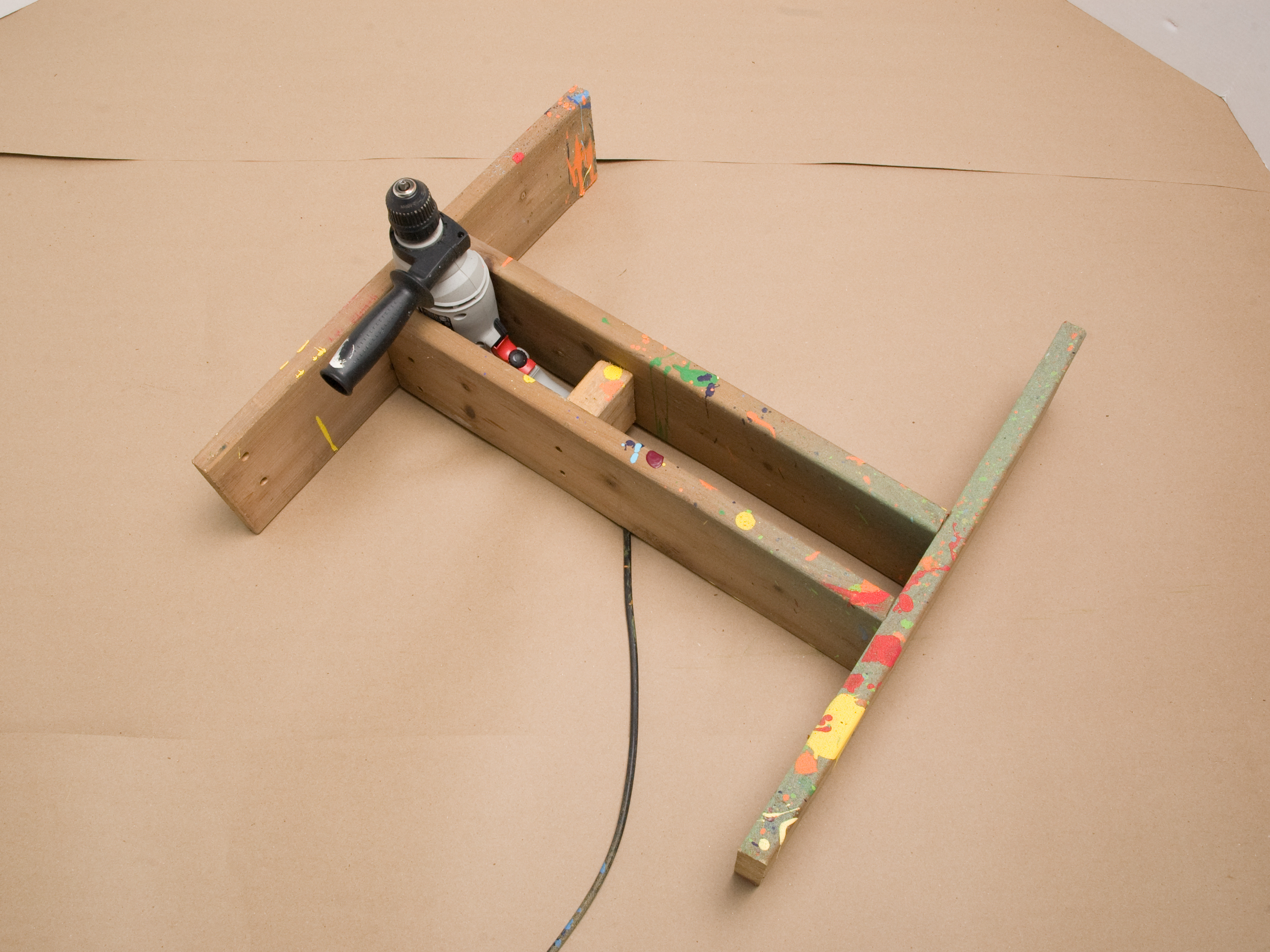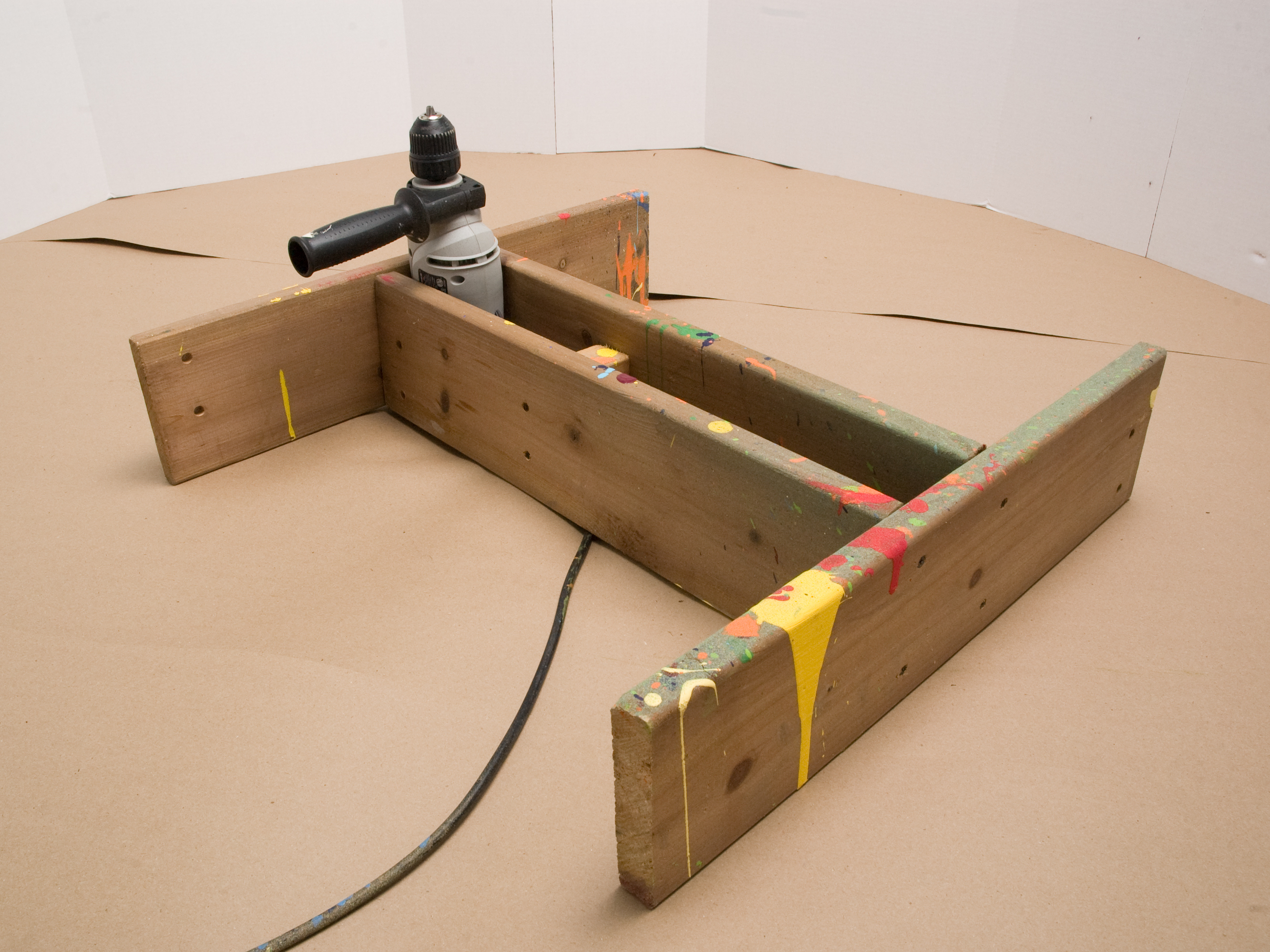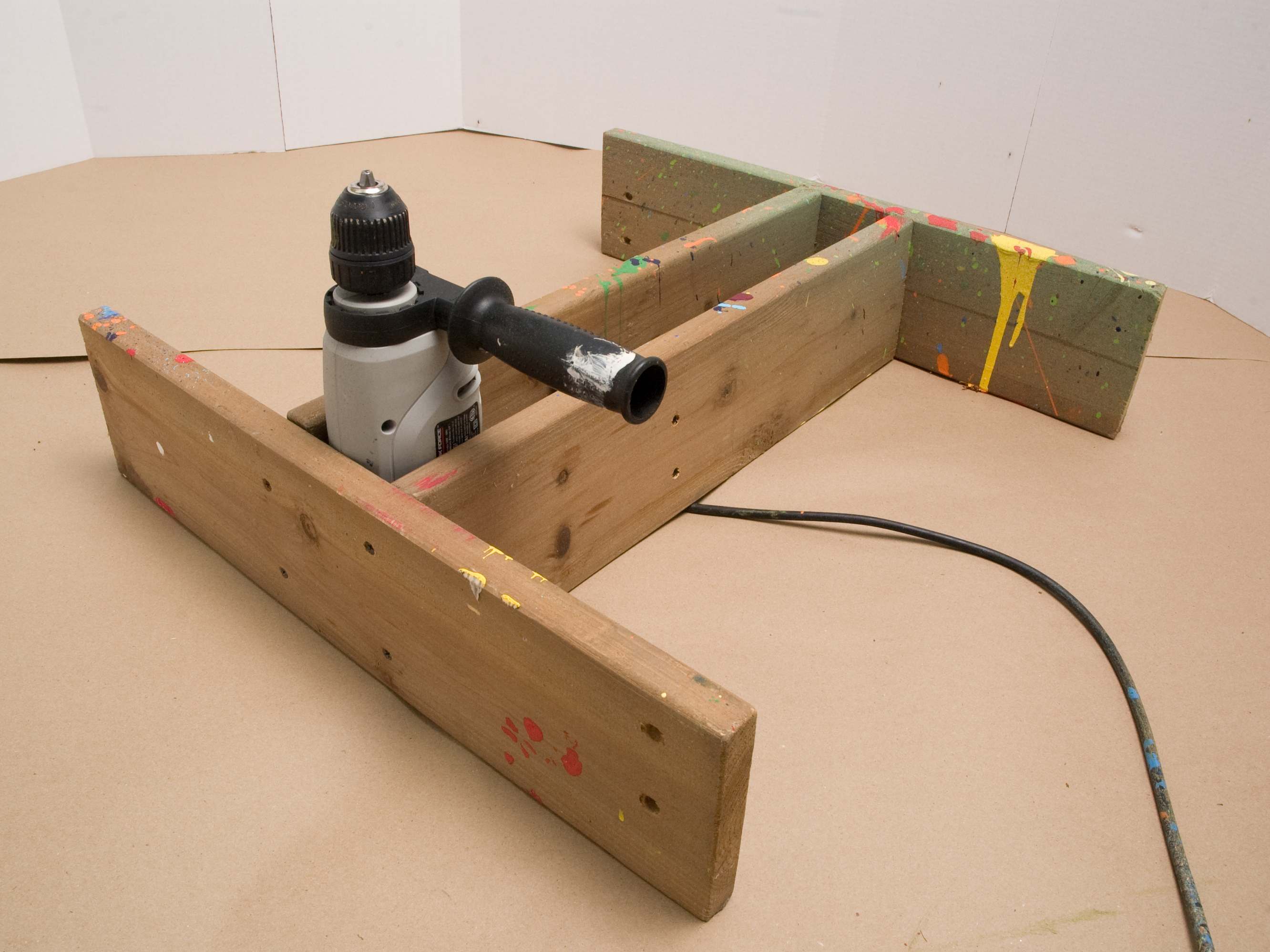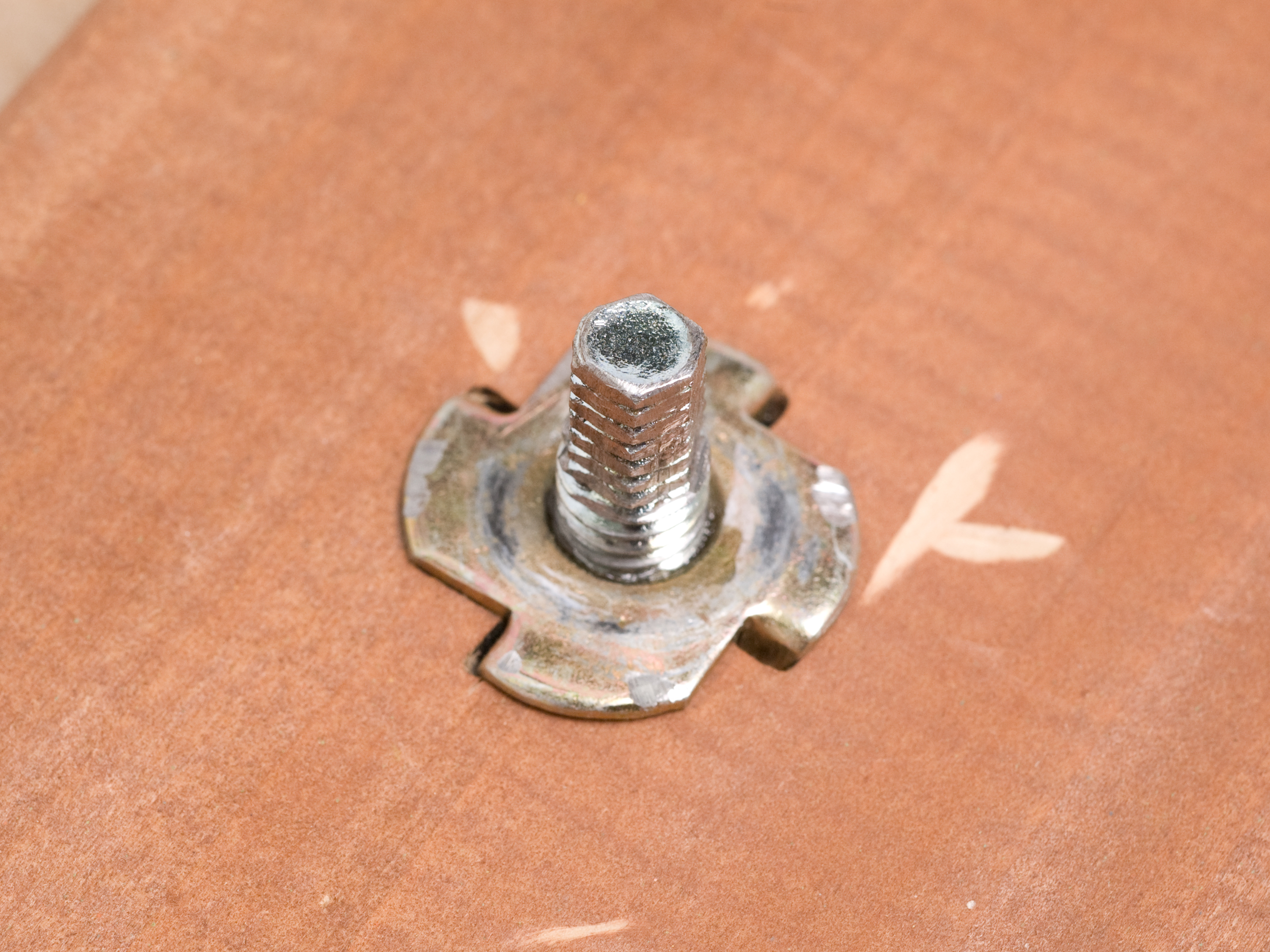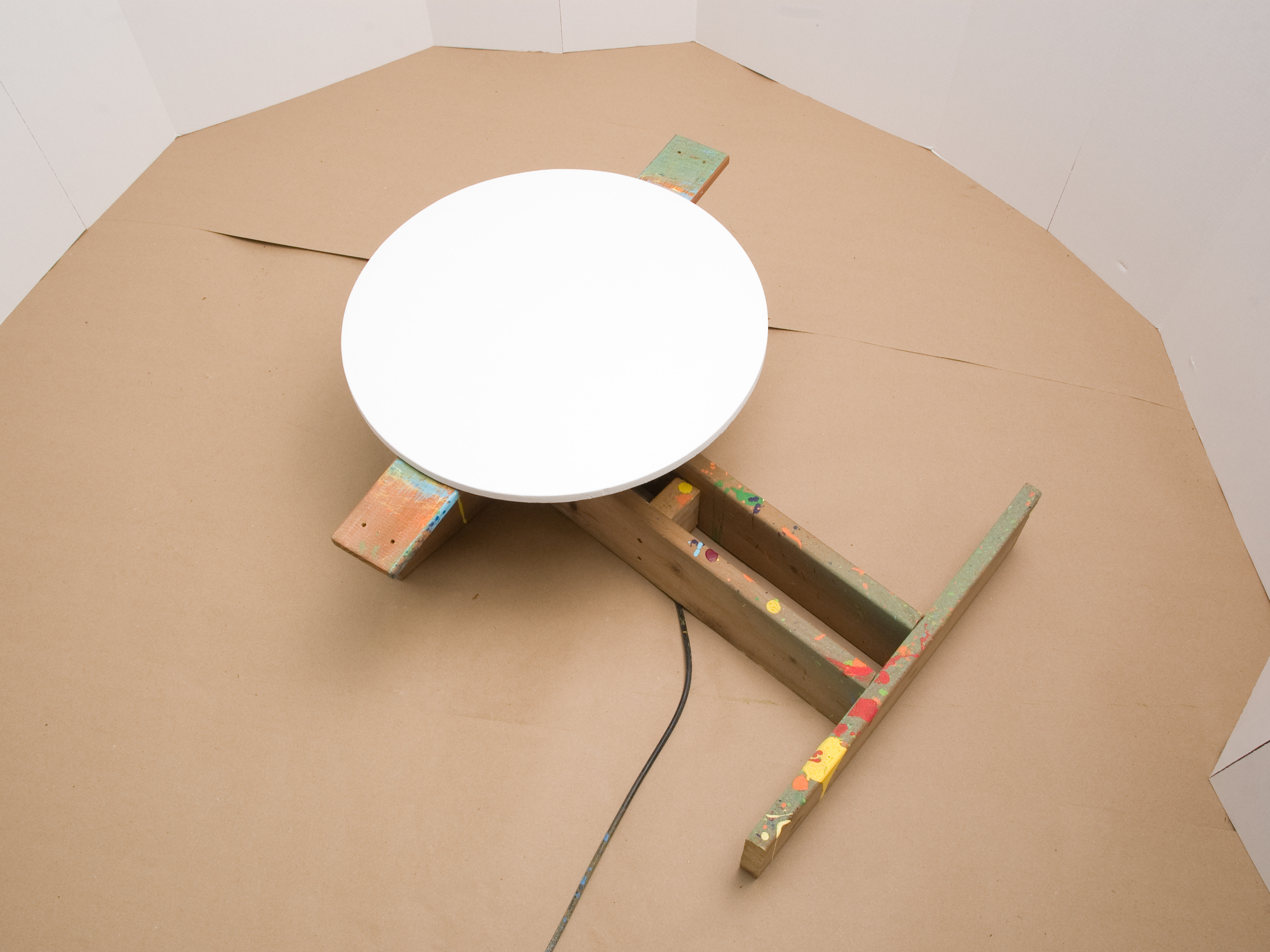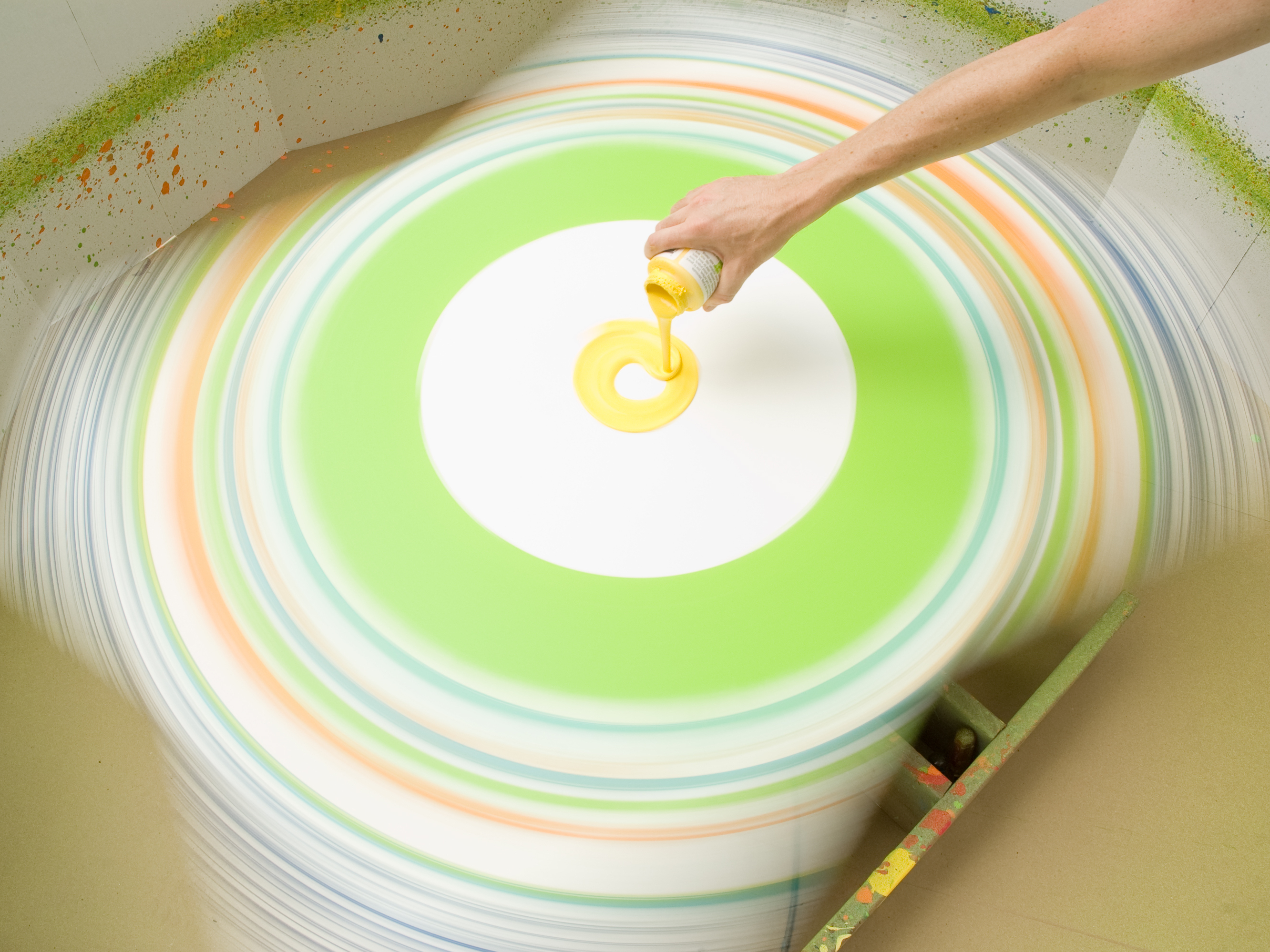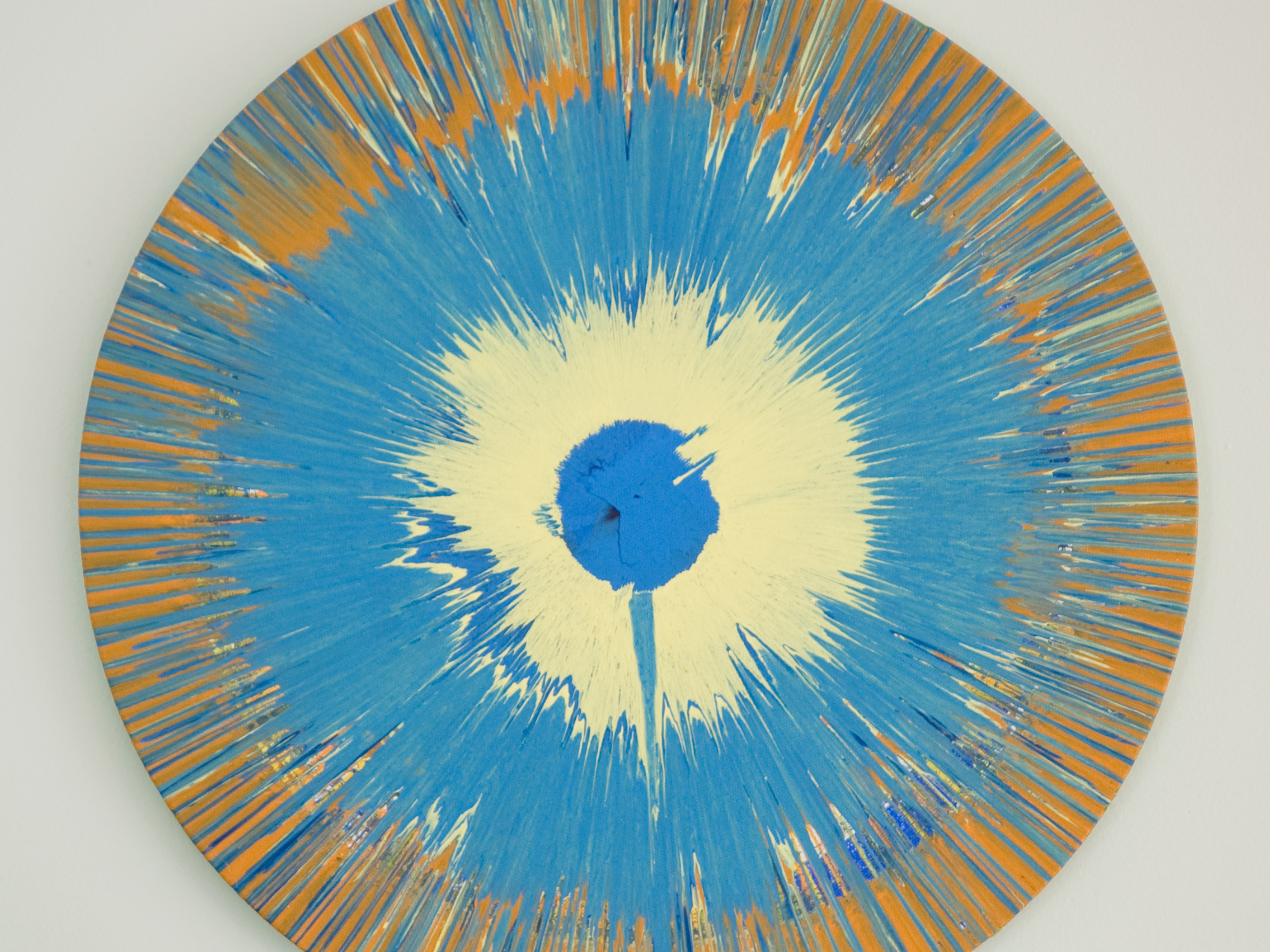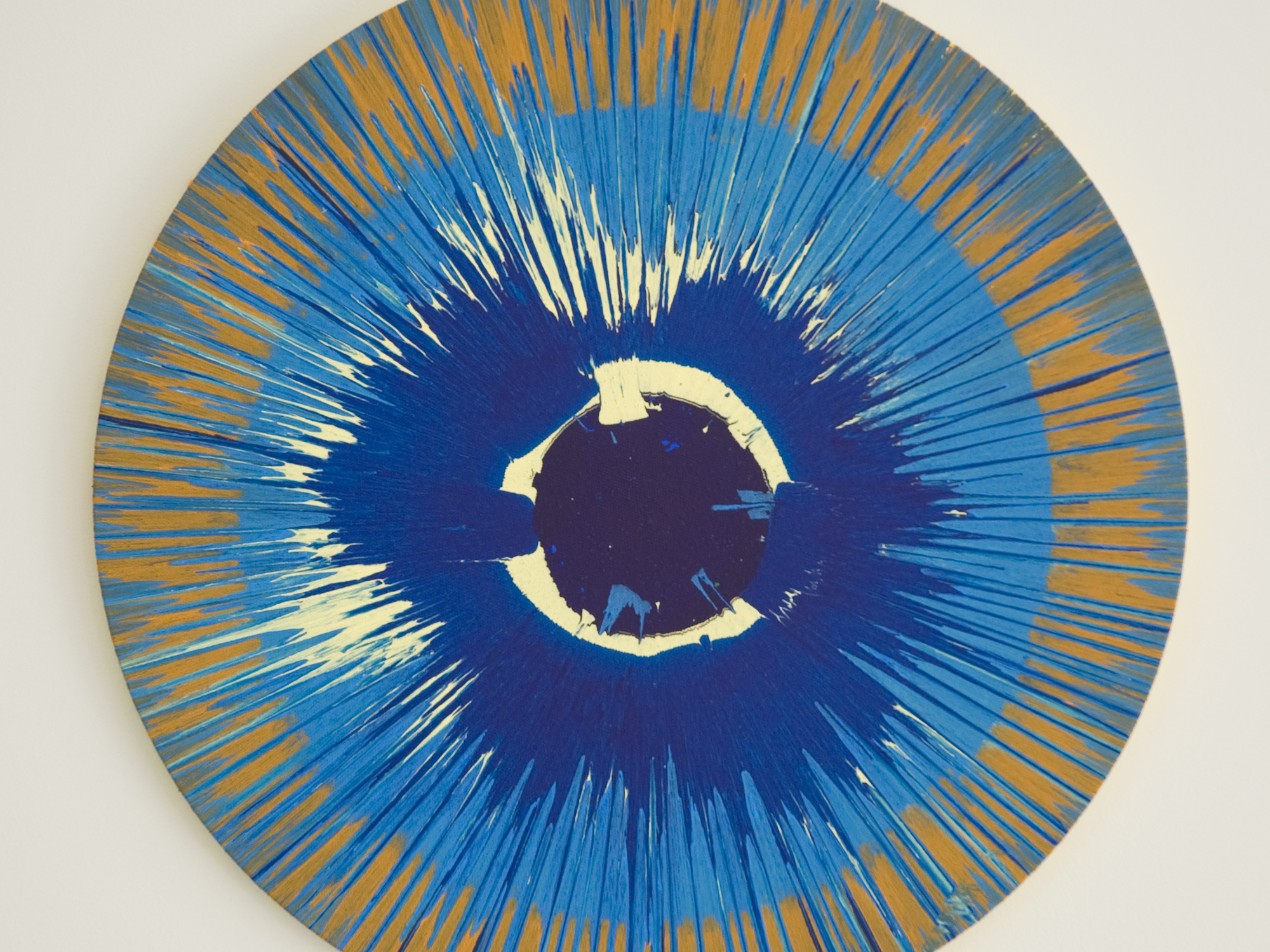Spin art is a children’s activity, often found at school fairs. Kids drop paint onto a spinning square of paper, making beautiful, colorful patterns. As adults, we imagined it would be fun to scale this up, and up, and up. Our friends envisioned injuries, or worse — an elaborate, spinning contraption flying high into the sky and disappearing.
So we tried it, and after burning out the motor from a box fan, we realized that a corded power drill would work better. Corded power drills are cheaper than battery-operated drills, and they typically have greater torque. Many even have a speed knob on the trigger, offering more control.
WARNING
- Adult supervision required for younger children.
- Watch your knees! And don’t lean over the device so far that you fall onto it.
- Stop the device immediately if it ever tips over. We stake ours to the ground.
- Keep electrical plugs out of the area where the paint is; don’t mix electricity and liquids.
- To minimize risk of electrocution, plug the device into a ground-fault circuit interrupter outlet. These are often labeled GFI or GFCI, with test and reset buttons on them.


